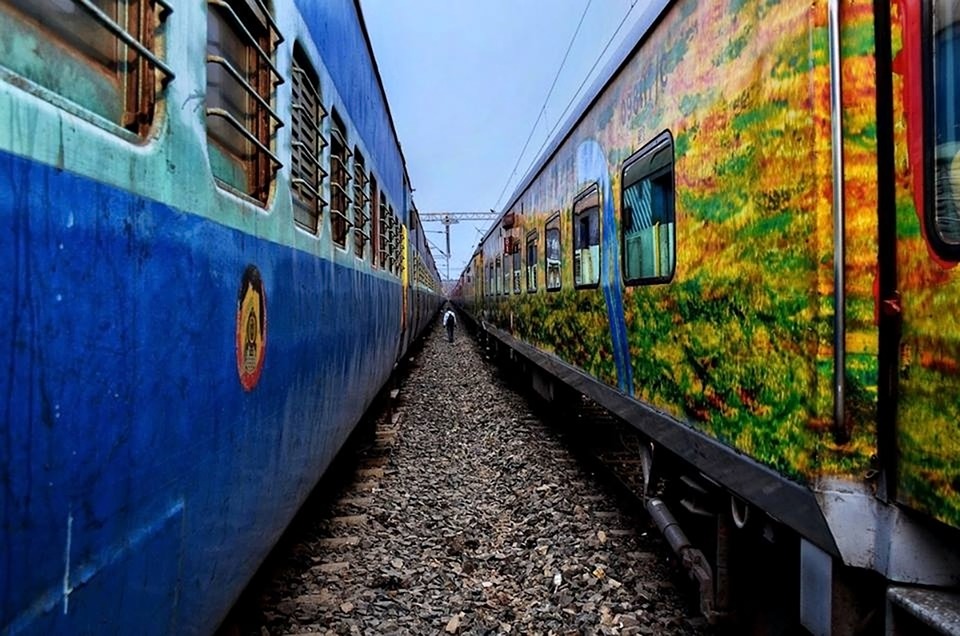
Two third of capex to come from pvt sector but does rlys have right mindset?

The government has envisaged a huge incremental investment in the Indian Railways (IR), with Finance Minister Nirmala Sitharaman talking of ₹50 lakh crore capex in the next 11 years in her Budget speech last morning.
This means almost tripling the average annual capex of the IR, which usually hovers around ₹1.5-1.6 lakh crore. But instead of the government pumping in more money into the national transporter, the plan is to get at least two-thirds of this increased annual capex requirement from the private sector through the Public-Private Partnership (PPP) mode.
Railways Minister, Piyush Goyal, had already set the cat among the pigeons last month when he said that plans were afoot to ask private parties to operate select passenger trains, without providing further details on how this experiment will work. This prompted some of the workers’ unions in IR to raise the prospect of privatization of the national transporter and some unions have already begun opposing any such move.
Also, an impassioned plea by UPA Chairperson Sonia Gandhi against the IR move to corporatize a coach-making factory in Rae Bareily in Parliament seems to add to the chorus against privatization.
Also read: Sonia Gandhi opposes corporatization of Rae Bareli coach factory
While the PPP mode of financing critical IR capex does raise questions on whether the government ultimately wants to privatize some of the Railways’ functions, one must remember that capex enhancement is crucial to the very survival of the IR. The IR’s modal share of transport for passengers and freight needs to increase for it to remain viable and experts have said earlier that the current share is just around 10% for passengers and around 30% for freight.
Put in other words, 90% of passenger traffic in India is not using the IR for domestic travel and just a third of the freight being transported across the country uses the national transporter. To augment these numbers, a higher capex is the need of the hour.
The existing railways’ network is congested, over-utilized and one of the key reasons for this has been continued underinvestment over successive governments. But having said that, some hurdles remain in the ambitious push for getting around ₹2 lakh crore annual investment through the PPP route.
“The indicated ₹50 lakh crore investment in Railways between 2019 to 2030 translates to around ₹4.5 lakh crore per annum. With government investment in the range of ₹1.5 crore per annum in Railways, the three times increase is targeted through private sector involvement. To make this happen, the establishment of an independent railway regulator is essential. In the current construct where the IR is both, the operator and regulator, a step jump in private sector investment will be difficult,” said Rajaji Meshram, Partner at EY India.
Also read: In Budget, Tamil Nadu has many demands from Railways
Not only does the IR need to set its own house in order in terms of regulatory mechanisms, but it must also take several other steps if the private sector is indeed required for capex. A Railways expert pointed out that first of all, the IR needs to create a mindset internally to deal with private sector investors.
Manish Agarwal, Leader Infrastructure PwC said there would be some pre-requisites to the IR becoming an attractive play for investors. “Either the IR provides pricing flexibility to such investors or it looks for increased efficiency for a fee, not looking at revenue considerations in the PPP projects”.
Meanwhile, just like previous years, the nearly 22 million daily train passengers neither expected nor got any fare hike. It is another matter that unless the IR raises fares, its ‘social service obligation’ – the amount it foregoes to keep fares low – will keep rising year on year and therefore its financial situation will remain precarious.
In 2018-19, this obligation was over ₹40,000 crore, according to a former Railway Board chairman. But fare fixing in the IR remains a political hot potato and is almost always a political call rather than being a commercial decision.
It is pertinent to mention here that the IR’s operating ratio (how much it spends to earn each rupee) has worsened during the NDA I term. In at least three of the last five years, this ratio was over 95%: 96.5% in 2016-17 and 98.4% in 2017-18. For 2018-19, it has been revised upwards from 92.8% at BE to 96.2% in the Interim Budget and further to 97.3% now. So as earnings lag targets and operating ratio climbs, the setting of viable commercial goals also assumes importance.
In the Interim Budget for 2019-20, the government had set overall capital expenditure for IR at the highest ever figure of ₹1.58 lakh crore, which has been further enhanced to ₹1.6 lakh crore now. In 2018-19, the capex was set at ₹1.48 lakh crore.


